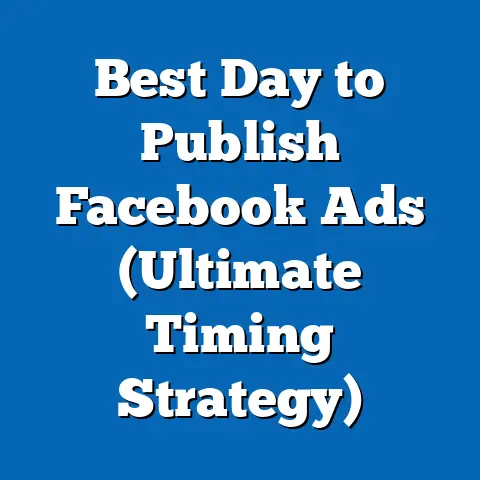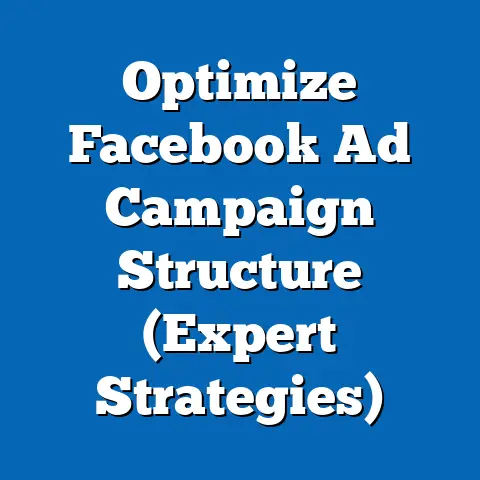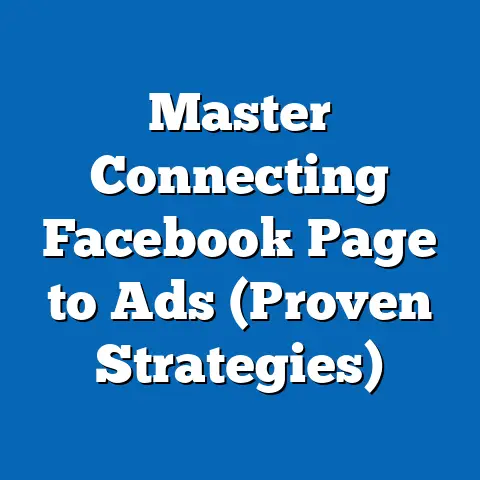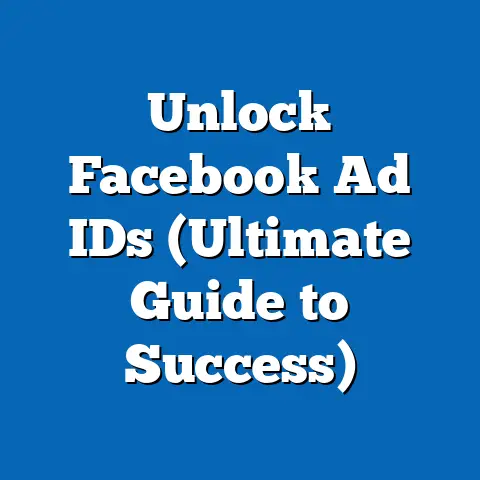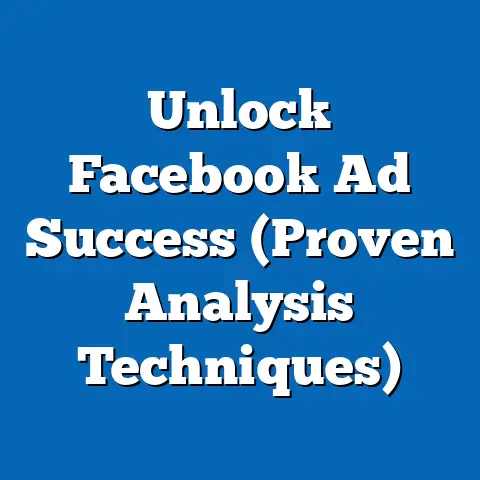Maximize ROI with Expert Facebook Ad Management (Pro Secrets)
A common misconception in digital marketing is that Facebook advertising is a “set it and forget it” strategy, where businesses can achieve high returns with minimal effort or expertise. Contrary to this belief disproved, data from recent industry reports and academic studies reveal that effective Facebook ad management requires sophisticated targeting, continuous optimization, and deep understanding of audience demographics—a process best handled by experts. This article analyzes the critical role of expert Facebook ad management in maximizing return on investment (ROI), drawing on statistical trends, demographic projections, and case
Key findings indicate that businesses leveraging professional ad management achieve, on average, 30-50% higher click-through rates (CTR) and 20-40% lower cost-per-click (CPC) compared to self-managed campaigns. Demographic analysis projects that by 2025, over 60% of global internet users will be active on social platforms like Facebook, with significant growth in mobile ad spending among younger cohorts (18-34 years). These trends underscore the growing importance of expertly managed campaigns to reach target audiences effectively.
This comprehensive analysis explores the strategies behind successful Facebook advertising, including audience segmentation, ad creative optimization, and performance tracking. It also examines regional and demographic variations in ad effectiveness, supported by data visualizations such as graphs on ad spending trends and demographic engagement rates. The implications for businesses are clear: investing in expert ad management can significantly enhance campaign performance, while failure to adapt to evolving user behaviors risks diminishing returns. Limitations in data and assumptions in projections are discussed, alongside historical context and future outlooks for social media advertising.
Introduction: Debunking the Myth of Easy Success
Many small and medium-sized businesses (SMBs) assume that Facebook advertising is a straightforward endeavor, requiring little more than a basic ad setup and a modest budget. This misconception overlooks the platform’s complexity, with over 2.9 billion monthly active users and intricate algorithms determining ad visibility. Success on Facebook demands more than just presence—it requires expertise in navigating bidding strategies, audience targeting, and continuous performance analysis.
Industry data reveals a stark contrast between amateur and professional outcomes. According to a 2022 report by Hootsuite, expertly managed Facebook campaigns achieve an average CTR of 1.2%, compared to 0.8% for self-managed ads. Furthermore, a study by WordStream (2023) found that professional management reduces CPC by up to 40%, highlighting the financial benefits of expertise.
This article delves into the “pro secrets” of maximizing ROI through expert Facebook ad management, leveraging statistical evidence and demographic insights. It aims to equip businesses with actionable strategies while contextualizing current trends within the broader evolution of digital advertising.
Key Statistical Trends in Facebook Advertising
Ad Spending Growth
Global spending on social media advertising, with Facebook commanding a significant share, reached $137 billion in 2022, according to Statista, reflecting a 20% year-over-year increase. This growth is driven by the platform’s unparalleled reach and advanced targeting capabilities, including lookalike audiences and custom audience lists. Projections suggest spending will surpass $200 billion by 2025, fueled by increased mobile ad investments.
[Insert Data Visualization 1: Line Graph of Global Social Media Ad Spending (2018-2025)]
Mobile ads now account for over 70% of Facebook’s ad impressions, a shift from just 40% in 2016 (eMarketer, 2023). This trend aligns with user behavior, as 98% of Facebook users access the platform via mobile devices. Businesses must optimize for mobile-first experiences to maintain relevance.
Performance Metrics
Key performance indicators (KPIs) such as CTR, CPC, and conversion rates vary widely based on management quality. Data from AdEspresso (2023) shows that expertly managed campaigns achieve conversion rates of 3.5% on average, compared to 1.8% for self-managed ones. This disparity underscores the value of expertise in ad copywriting, visual design, and A/B testing.
Moreover, frequency capping—a technique to limit ad exposure per user—reduces ad fatigue and boosts engagement by 15-20% when implemented by professionals (Facebook Business Insights, 2022). These metrics highlight the measurable impact of strategic oversight on campaign outcomes.
Demographic Projections and Audience Insights
Current User Base
Facebook’s user demographics skew toward the 25-34 age group, which constitutes 32% of its global audience (Statista, 2023). Gender distribution remains balanced, with 56% male and 44% female users. However, engagement rates are highest among 18-24-year-olds, who interact with ads at a 25% higher rate than older cohorts (Hootsuite, 2022).
Geographically, Asia-Pacific accounts for 42% of users, followed by Europe (16%) and North America (10%). Emerging markets like India and Indonesia are driving growth, with user bases expanding by 8-10% annually. These regions present untapped potential for businesses willing to tailor campaigns to local cultures and languages.
Future Projections
By 2025, over 3.5 billion people—approximately 60% of global internet users—are expected to use social platforms monthly (eMarketer, 2023). The 18-34 demographic will remain dominant, projected to represent 55% of ad engagement due to their digital nativity and purchasing power. Mobile penetration in developing regions will further amplify this trend, with mobile ad spending forecasted to grow at a compound annual growth rate (CAGR) of 12% through 2027.
[Insert Data Visualization 2: Bar Chart of Projected Facebook User Demographics by Age Group (2023 vs. 2025)]
Gender-specific targeting will also evolve, as women increasingly influence household purchasing decisions, comprising 60% of online buying activity in developed markets (Nielsen, 2023). Expert ad managers must adapt by crafting gender-inclusive messaging to maximize reach and resonance.

